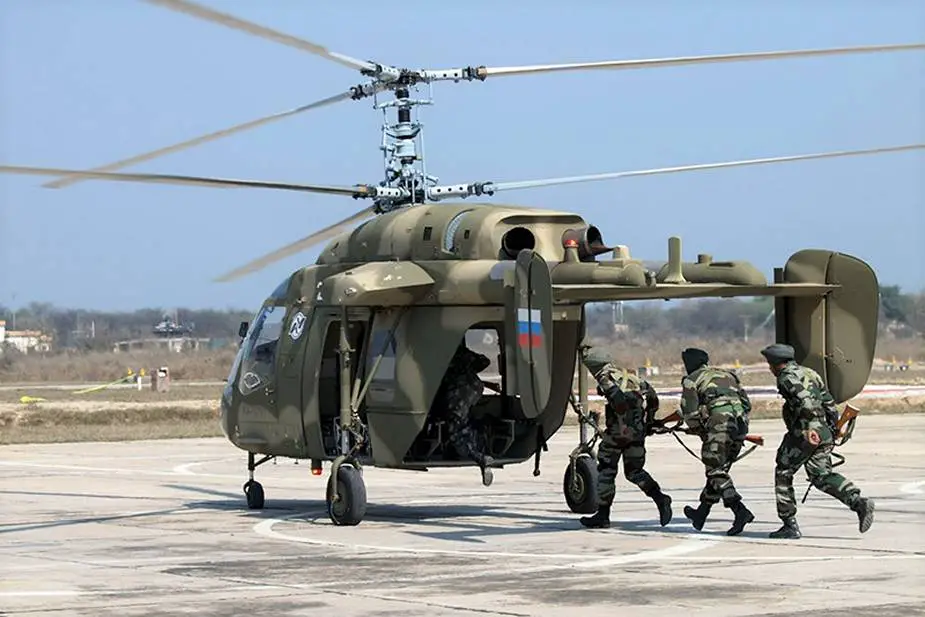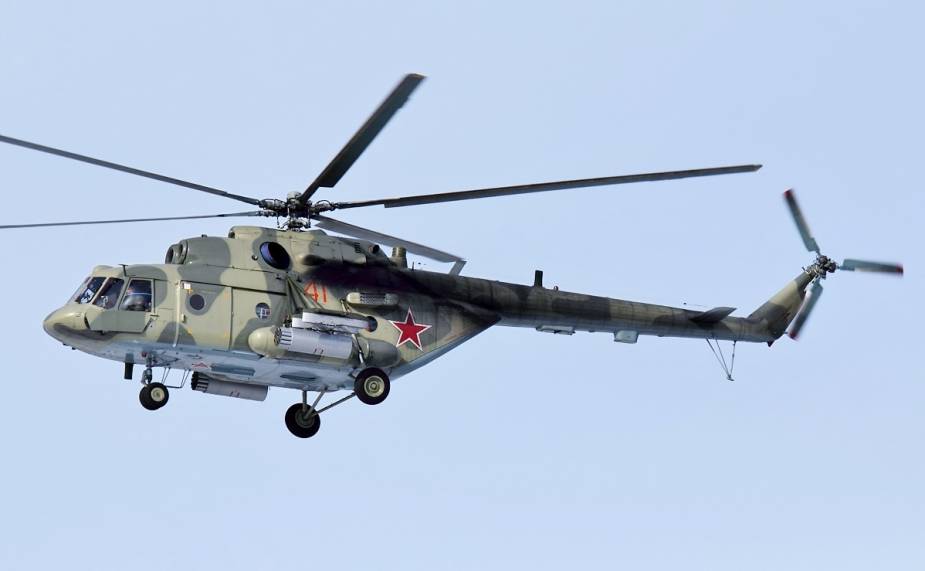Russia is increasing the footprint of its rotary-wing aircraft in India, according to Russian officials. In late May, Director General of Rosoboronexport arms exporting company (a subsidiary of state corporation Rostec) Alexander Mikheev told the TASS news agency that the enterprise had formed a program to localize the manufacturing of Kamov Ka-226T light utility helicopter in India.
Follow Air Recognition on Google News at this link
 At Aero India 2019, Russian Helicopters identified a chain of 30 potential local suppliers of components for the Kamov Ka-226T helicopter to be made in India and signed a Memorandums of Understanding (MoU) with Elcom, Valdel Advanced Technologies, Dynamatic Technologies, Integrated Helicopter Services and Bharat Forge as potential suppliers of rotor blades, radio stations, landing gear and the elements of the fuselage (Picture source: Russian Helicopters)
At Aero India 2019, Russian Helicopters identified a chain of 30 potential local suppliers of components for the Kamov Ka-226T helicopter to be made in India and signed a Memorandums of Understanding (MoU) with Elcom, Valdel Advanced Technologies, Dynamatic Technologies, Integrated Helicopter Services and Bharat Forge as potential suppliers of rotor blades, radio stations, landing gear and the elements of the fuselage (Picture source: Russian Helicopters)
“The design of the rotorcraft and the program of its localized manufacturing has been formed with our Indian partners. The localized manufacturing program has been agreed with the Indian side. Once the issues related to Covid-19 have been solved, we will start negotiations, when ready,” said Mikheev.
The main tasks of the production of Ka-226Ts in India have been solved, he noted. “The main tasks set by the Indian side, namely to form the localization program, to find Indian partners, and to define the design of the rotorcraft, have already been solved,” said Mikheev.
According to the chief of Rosoboronexport, Russian-made Mil Mi-17V-5 utility helicopters are widely used to fight the spread of Covid-19 across the world. “The helicopters are involved in rescue operations and transportations in Latin America, namely in Peru, Columbia, and Mexico,” said Mikheev.
Mi-17V-5s are intensively operated to fight Covid-19 in India. “The situation in India is not easy. Of course, Russian-made items of hardware are used and the armed forces and aviation of the [Indian] Army and the [Indian] Air Force are mobilized. The helicopters definitely [work] in the areas, where the disease outbreaks,” said Mikheev.
According to the Military Balance 2020 report published by the London-based International Institute for Strategic Studies (IISS), the Indian Air Force operates some 270 Mi-17-family rotorcraft.
The Mi-17V-5 can be fitted with a wide range of SAR subsystems. According to the portfolio of its manufacturer, the Russian Helicopters holding (a subsidiary of state corporation Rostec), the platform carries night vision goggles, up to 12 stretchers, a searchlight with an infrared filter, a forward-looking infrared (FLIR) device, an emergency landing system, a water bucket, and various 150 kg/280 kg/300 kg winches. The helicopter is also capable of joining combat search-and-rescue (CSAR) missions.
The Mi-17V-5 is powered by two Klimov VK-2500-family engines with a top power output of 2,700 hp each. The powerpack has been designed by UEC-Klimov (a subsidiary of Rostec’s United Engine Corporation). The rotary-wing platform has a maximum take-off weight (MTOW) of up to 13,000 kg and a service ceiling of 6,000 m. It transports up to 36 persons or 12 wounded on stretchers. The platform’s 23 m3 cargo compartment allows transportation of a 4,000 kg cargo; the helicopter also externally carries a 4,000 kg using its sling. The rotorcraft has a basic cruise range of 580 km, which extends to 1,065 km with the use of two additional fuel tanks. The Mi-17V-5 produces a cruise speed of 230 km/h and a top speed of 250 km/h. It should be mentioned that the rotorcraft can be operated as a flying hospital.
An IAF source told the TASS news agency that the cargo/troop cabin of Mi-17V-5 fully meets the requirements of the Indian military. “The cabin allows transportation of both troops and cargo. Mi-17V-5 has the largest troop cabin in its class,” said the source.
The Mi-17V-5 also showed good performance during operations to fight the spread of the novel coronavirus (Covid-19). In particular, the Indian Air Force (IAF) intensively uses the rotorcraft during anti-Covid-19 missions.

Mil Mi-17V-5 (Mi-8MTV-5) (Picture source: Wikimedia/Igor Dvurekov)
© Copyright 2021 TASS. All rights reserved. This material may not be published, broadcast, rewritten or redistributed.
















